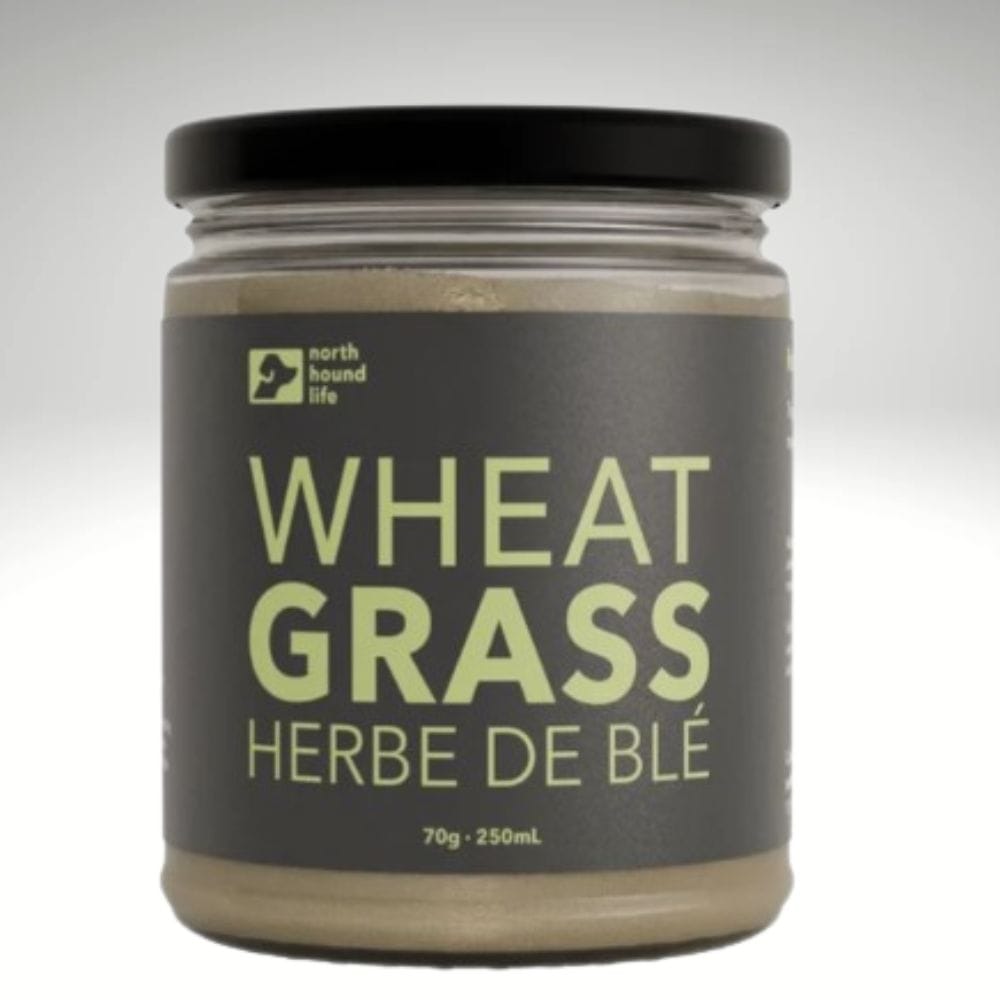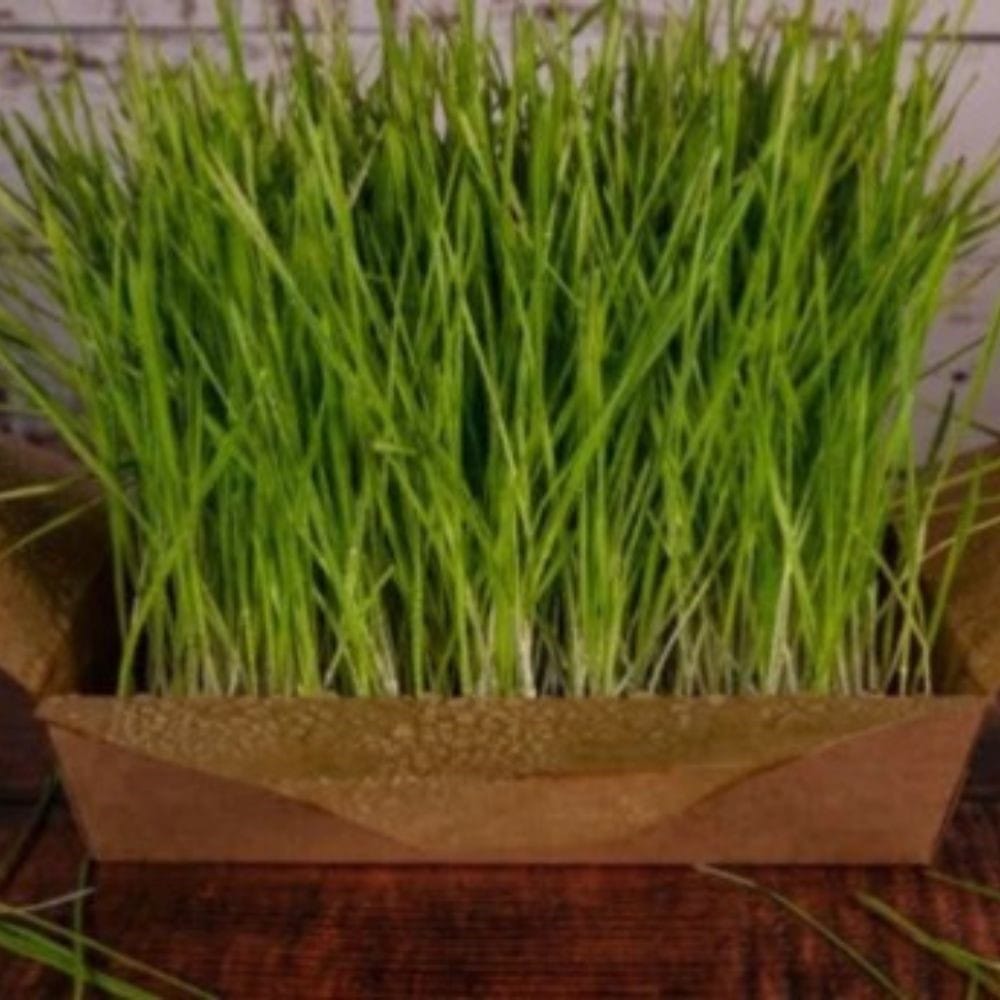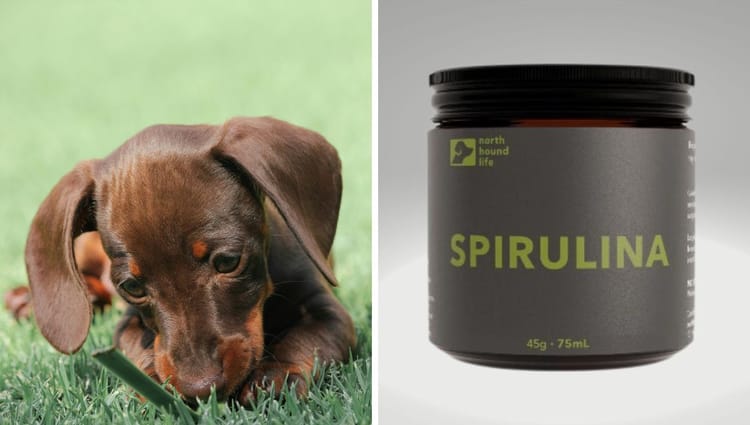Unleash the Power of Green: Wheatgrass Superfood for Pawsome Health!

Key Takeaways:
- Wheatgrass is a nutrient-dense superfood that offers numerous health benefits for dogs.
- Organic wheatgrass supplements can improve your dog's digestion, energy levels, and overall well-being.
- Incorporating wheatgrass into your dog's diet is simple and can be done through various forms such as powders, juices, or treats.
What is Wheatgrass?
Wheatgrass is the young grass of the common wheat plant, Triticum aestivum. It is harvested early in its growth cycle, typically within 7-10 days, when it is most nutrient-dense. This superfood is packed with vitamins, minerals, amino acids, and enzymes that are beneficial for both humans and animals.
For dogs, wheatgrass can be a game-changer. It contains chlorophyll, which helps detoxify the body, and a range of antioxidants that combat free radicals. These properties make it an excellent supplement for enhancing your dog's health and vitality.
Nutritional Profile of Wheatgrass
Wheatgrass is a powerhouse of nutrients. It contains high levels of vitamins A, C, E, and K, as well as essential minerals like calcium, magnesium, and iron. Additionally, it is rich in amino acids, the building blocks of protein, which are crucial for muscle development and repair.
The chlorophyll in wheatgrass acts as a natural detoxifier, helping to cleanse the liver and improve overall organ function. Enzymes present in wheatgrass aid in digestion, making it easier for your dog to absorb nutrients from their food. This comprehensive nutritional profile makes wheatgrass an ideal supplement for dogs of all ages.
Health Benefits for Dogs
One of the primary benefits of wheatgrass for dogs is its ability to improve digestion. The enzymes in wheatgrass help break down food more efficiently, reducing issues like bloating and gas. This can be particularly beneficial for dogs with sensitive stomachs or digestive disorders.
Wheatgrass also boosts energy levels. The vitamins and minerals in wheatgrass help to increase stamina and reduce fatigue, making it an excellent supplement for active dogs. Additionally, the antioxidants in wheatgrass support a healthy immune system, helping your dog fight off infections and illnesses more effectively.
How to Introduce Wheatgrass to Your Dog's Diet
Introducing wheatgrass to your dog's diet is straightforward. You can start by adding a small amount of wheatgrass powder to their regular food. Gradually increase the dosage as your dog gets used to the new addition. Most dogs adapt well to the taste, but if your dog is picky, you can mix the powder with a bit of water or broth to make it more palatable.
Another option is to use wheatgrass juice. You can either buy pre-made juice or make your own by juicing fresh wheatgrass. Add a small amount to your dog's water bowl or mix it with their food. Wheatgrass treats are also available and can be a convenient way to incorporate this superfood into your dog's diet.
Choosing the Right Wheatgrass Supplement
When selecting a wheatgrass supplement for your dog, it's essential to choose an organic product. Organic wheatgrass is free from pesticides and harmful chemicals, ensuring that your dog gets the purest form of this superfood. Look for products that are specifically formulated for pets, as these will have the appropriate dosage and quality standards.
It's also important to read the label carefully. Some wheatgrass supplements may contain additives or fillers that are not beneficial for your dog. Opt for products that list 100% organic wheatgrass as the primary ingredient. This ensures that your dog receives the maximum health benefits from the supplement.
Potential Side Effects and Precautions
While wheatgrass is generally safe for dogs, it's essential to introduce it gradually to avoid any potential side effects. Some dogs may experience mild digestive upset, such as diarrhea or vomiting, when first introduced to wheatgrass. If this occurs, reduce the dosage and consult your veterinarian.
It's also crucial to monitor your dog for any signs of allergies. Although rare, some dogs may be allergic to wheatgrass. Symptoms of an allergic reaction can include itching, swelling, or difficulty breathing. If you notice any of these signs, discontinue use immediately and seek veterinary advice.
Case Studies: Success Stories
Many dog owners have reported significant improvements in their pets' health after incorporating wheatgrass into their diet. For example, a Labrador Retriever named Max suffered from chronic digestive issues. After adding wheatgrass powder to his meals, Max's digestion improved dramatically, and he became more energetic and playful.
Another success story involves a senior Beagle named Daisy. Daisy had low energy levels and struggled with joint pain. Her owner started giving her wheatgrass juice daily, and within a few weeks, Daisy showed noticeable improvements in her mobility and overall well-being. These case studies highlight the potential benefits of wheatgrass for dogs.
DIY Wheatgrass Growing Tips
Growing your own wheatgrass at home is a cost-effective way to ensure a fresh supply for your dog. Start by purchasing organic wheatgrass seeds from a reputable supplier. Soak the seeds in water for 8-12 hours, then spread them evenly on a tray filled with organic soil. Keep the tray in a sunny spot and water it regularly.
Within a week, you'll have fresh wheatgrass ready for harvesting. Cut the grass close to the base and juice it or blend it into a powder. Growing your own wheatgrass allows you to control the quality and ensures that your dog gets the freshest, most nutrient-dense supplement possible.
Wheatgrass vs. Other Superfoods
While wheatgrass is an excellent superfood, it's not the only option available for dogs. Other popular superfoods include spirulina, chlorella, and turmeric. Each of these has its unique benefits. For instance, spirulina is rich in protein and antioxidants, while turmeric has anti-inflammatory properties.
However, wheatgrass stands out due to its comprehensive nutritional profile and ease of incorporation into a dog's diet. Unlike some other superfoods, wheatgrass is readily accepted by most dogs and can be easily mixed with their regular food or water. This makes it a versatile and convenient option for pet owners.
Frequently Asked Questions (FAQ)
1. Can all dogs benefit from wheatgrass supplements?
Yes, most dogs can benefit from wheatgrass supplements. However, it's always best to consult your veterinarian before introducing any new supplement to your dog's diet, especially if your dog has existing health conditions.
2. How much wheatgrass should I give my dog?
The dosage depends on your dog's size and weight. Generally, a small dog can start with 1/4 teaspoon of wheatgrass powder, while a larger dog can start with 1/2 teaspoon. Gradually increase the dosage as your dog gets used to it.
3. Can I give my dog wheatgrass every day?
Yes, wheatgrass can be given daily as part of a balanced diet. However, it's essential to monitor your dog for any signs of digestive upset or allergies and adjust the dosage accordingly.
Summary
Wheatgrass is a nutrient-rich superfood that offers numerous health benefits for dogs. From improving digestion and boosting energy levels to supporting a healthy immune system, wheatgrass can be a valuable addition to your dog's diet. By choosing organic supplements and introducing them gradually, you can help your dog enjoy the many advantages of this powerful plant.







